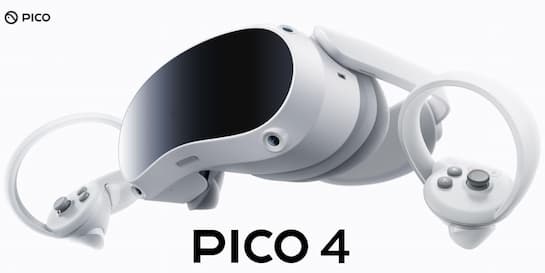Up until the runaway success of Meta Quest 2 many were still doubtful that virtual reality technology could gain a foothold and achieve widespread adoption. Now VR is well and truly accepted and utilized in many arenas. Chief among its uses, VR has enlarged the world of interactive entertainment in ways that would’ve seemed unlikely when the technology first appeared in nascent form in the middle of the twentieth century. Gamers, cineastes, VR porn viewers, world travelers, educators and meditators are among those now enjoying rich virtual experiences made possible by improving technologies. What is even more exciting than the current state of VR, however, is, naturally, the next generation of hardware and the advances it will bring.
The Quest for Expression
With Meta Quest 2 being the world’s most purchased and most used VR device – the headset has sold more than 14 million units worldwide – it is only natural that its successor would be of major interest to consumers, developers, and the VR industry at large. After many months of anticipation and speculation, Meta is on the verge of announcing that successor, although whether it will truly supplant Quest 2 remains to be seen. Along with numerous sensible advancements, the expected Meta Quest Pro is reported to utilize eye and face tracking to allow users to express themselves more naturally through their VR avatars.
An unofficial render of the forthcoming Meta Quest Pro. [Image: Marcus Kane]
Working in conjunction with Meta’s ambitious Metaverse projects like Horizon Worlds, eye and face tracking will bring a new level of personality and an as-yet unseen human element to interacting with others in VR. While some naysayers are questioning what Meta (formerly Facebook) plans to do with all the user data it accumulates via these tracking technologies, others are thrilled to be throwing off the shackles of hand-held controllers and diving into the world of gestural control.
We are quickly approaching an era in which you will no longer have to manually move a controller to select a menu option or, in a gaming environment, walk, run, jump, or use a weapon. Instead, you will look at what you want to select or where you want to go and blink, speak, or otherwise gesture. While this may technically count as manual operation, the demands are so minimal they’re comparatively nonexistent. Quest Pro won’t be priced as affordably as Quest 2 but it cost what previous higher-end headset cost either. With Quest 2’s market dominance as-yet unchallenged, Quest Pro could soon become the first choice of VR connoisseurs.
Sony Presents its Next Gen
After the strong success of Sony’s first Playstation VR device, which launched in late 2016, many are looking forward to the release of PS VR2 in early 2023. With specs that offer an expected improvement on the original PS VR, PS VR2 is clearly aiming to dominate the console-based VR gaming market. With its extensive history of success, the sell-out status of Playstation 5 (which will be required to run PS VR2), and the obvious brand recognition provided by both the Sony and Playstation names, PS VR2 is expected to be a strong, if not runaway, seller.
Sony’s second VR device, Playstation VR2 will arrive in early 2023. [Image: Sony]
With the disappointing news that PS VR2 will not play first gen PS VR games, many former PS VR users may head to another VR device for their next gen entertainment. Meta Quest Pro could be too expensive for these gamers, which makes any serious Quest-line competitor incredibly attractive.
Pico’s Poses a Challenge
After a longstanding commitment to creating VR devices for enterprise, industrial, and business applications, Pico has shifted toward consumer-oriented hardware. The recently announced Pico 4 is being called by many a ”Quest 2 challenger” and it’s easy to see why.
Pico 4. A challenger to Quest 2 and an accomplished piece of technology. [Image: Pico]
Utilizing many of the same technologies and features that made Quest 2 such a roaring success, Pico 4 could match Meta’s flagship device in almost every sense. Add to its already impressive specs a lightweight form factor and pancake lenses and a 105° field of view that, in use, reportedly appears even larger than that number suggests, and you’re looking at a potential Quest 2 killer. Quest 2 users and VR devotees looking to make a modest but not insignificant upgrade may very well find Pico 4 a perfect fit.
Whether any of this next generation can shake up Quest 2’s current dominance and Meta’s leading identification with VR entertainment and culture remains to be seen. Regardless of the outcomes, it’s clear VR is continually evolving and that we are headed for a future in which all our lives will have some degree of virtual reality component.
Table of Contents



